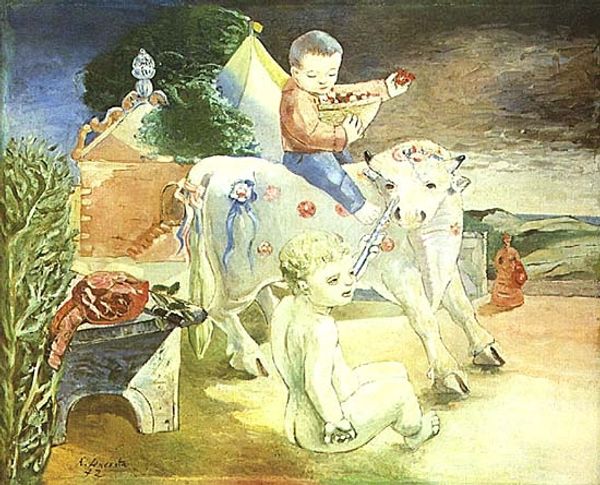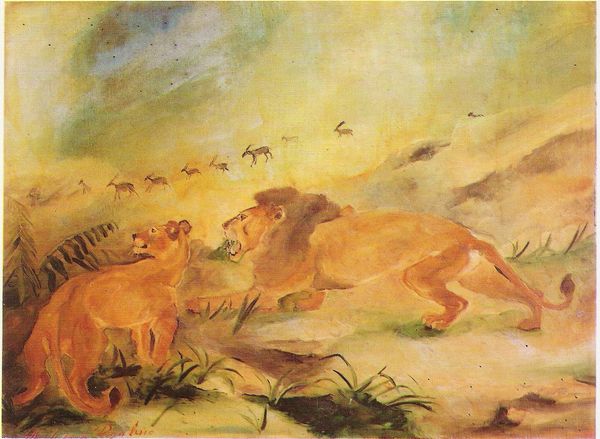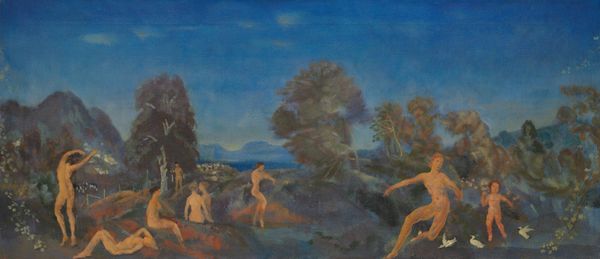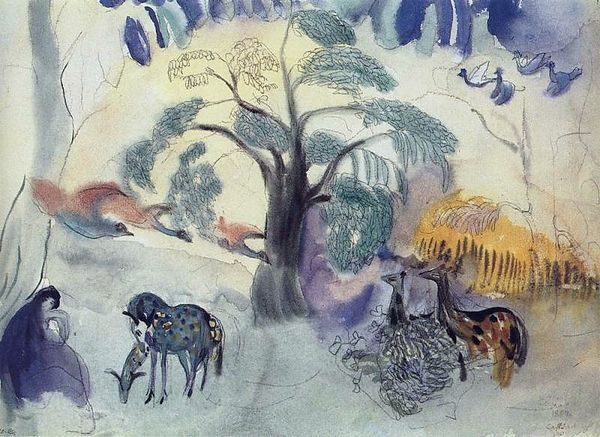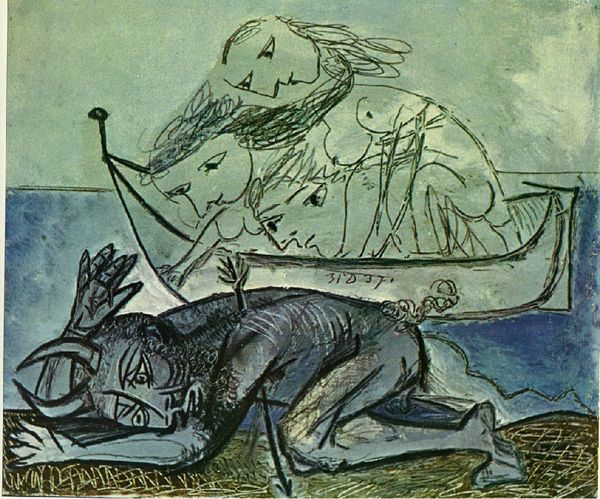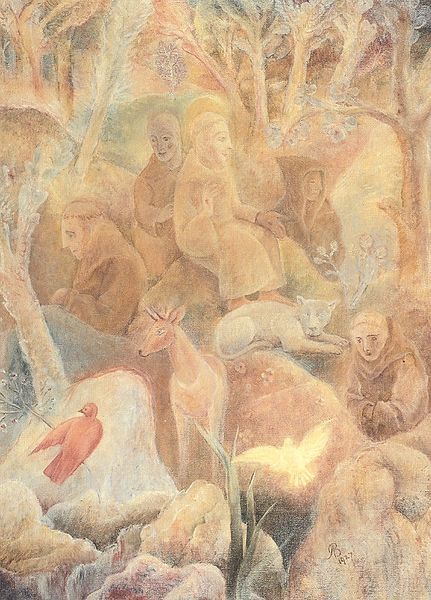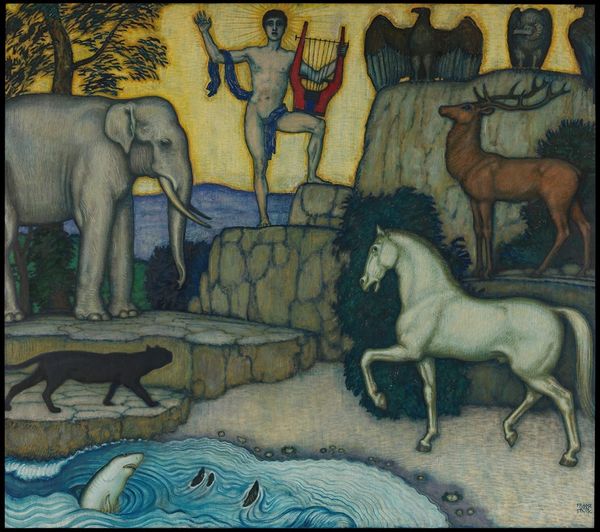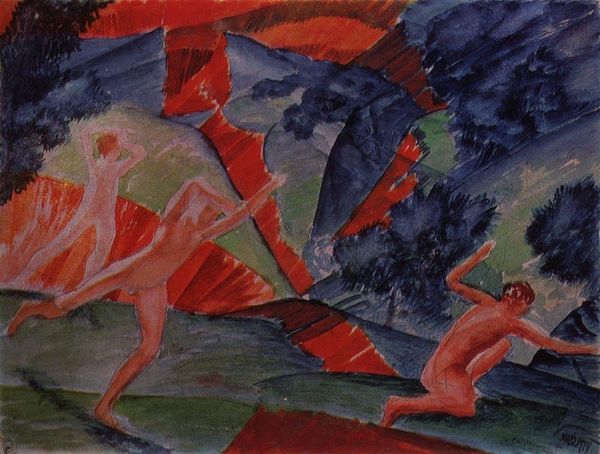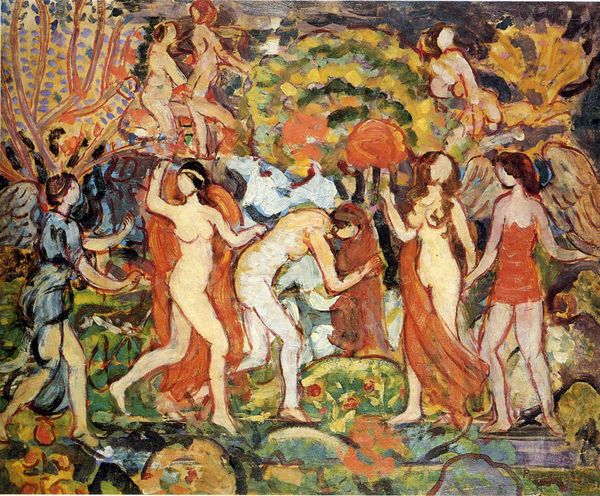
Dimensions: 274 x 479 cm
Copyright: Andre Derain,Fair Use
Editor: We’re looking at “Golden Age,” a tempera painting by André Derain from 1940. It depicts a sort of idyllic, mythological landscape, but there’s something… unsettling about it. The colors are muted, and the figures seem stiff and a bit haunted. What strikes you most when you look at it? Curator: Ah, yes, unsettling! It’s like stepping into a dream, isn't it? The Golden Age, often depicted as a time of harmony and abundance, but Derain hints at something more complicated, wouldn't you say? He was painting during a tumultuous time in Europe, so how can that possibly affect a work? Do you get any undertones, or allusions, about "history" here? Editor: Definitely! The idyllic setting clashes with the tension in the figures. It feels like there's a struggle beneath the surface, between harmony and something darker. Maybe this represents a fear or even critique from Derain about society? Curator: Exactly! You've hit upon the crucial point of his emotional register. Derain’s “Golden Age” is not a naive paradise, it is the end of one. Those animals and their handlers show signs of domestication - can you imagine what a world lost in innocence looks like? Editor: Wow, I hadn't considered the domestication angle, only what they would be in their natural states. It makes the entire painting feel even more tragic - a true paradise lost. Curator: Perhaps Derain asks what must have seemed absurd, but is truly sublime to witness now: Can beauty exist in a post-Edenic space? And if so, how? It's like the past speaking, asking a present still forming, a kind of oracle! It may still hold meaning as new technology gets churned. What a marvel! Editor: It does add so much more depth knowing a bit about Derain’s perspective, his cultural backdrop. Thank you, that gave me a lot to think about.
Comments
No comments
Be the first to comment and join the conversation on the ultimate creative platform.
